Are Owls Dangerous To Humans?
Last Updated on
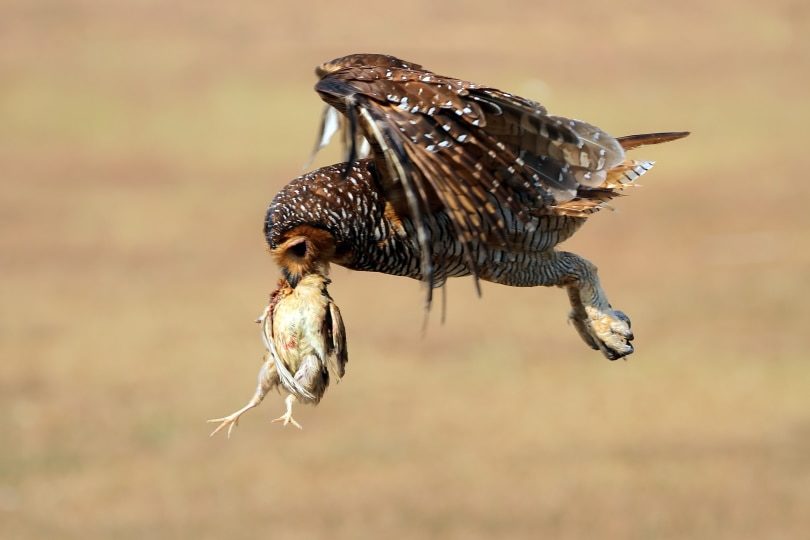
Many people have never seen an owl despite the fact that these birds live in almost every country in the world. However, once people learn they live in all 50 states in America, the first thing several people ask us is if they’re dangerous to humans. The short answer is that owls are rarely a danger to people.
Keep reading while we look into owl behavior to see if there’s anything we need to do to protect ourselves.
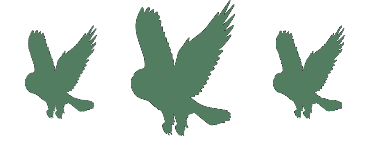
Do Owls Attack Humans?
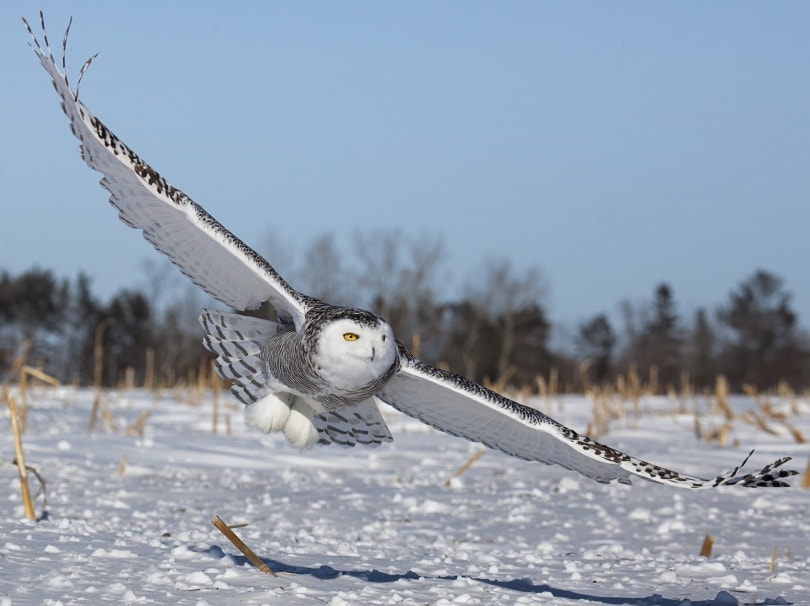
Birds of Prey
Like eagles, falcons, hawks, buzzards, and vultures, owls are birds of prey, which means they prefer to hunt and eat other animals rather than seeds or worms. Most owls primarily stick to eating small rodents like mice and moles, but they will also eat reptiles, amphibians, insects, and even small rabbits and hares. They have a high metabolism, so they must eat frequently, and they have difficulty digesting their food after eating it whole, so they often regurgitate it into pellets that you will find around their nesting site. Since humans are so large, most owls are unlikely to see them as a potential food source.
Habitat Destruction
As we mentioned earlier, many people don’t realize that owls live everywhere in the United States, including Alaska and Hawaii, so habitat destruction is a real threat. Humans can also invade their space and get too close to their nests without realizing it. If the owls have babies, they are more likely to become aggressive than they ordinarily would.
What Owl Species Are Most Likely to Attack Humans?
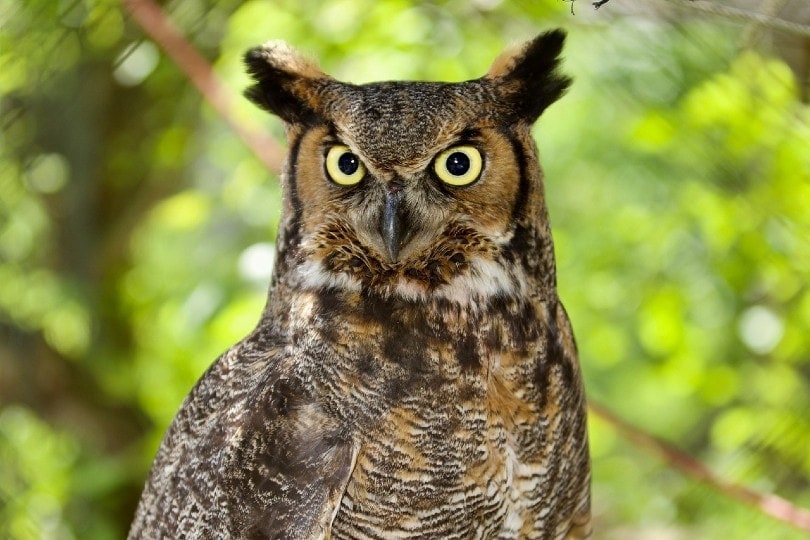
Great Horned Owls
Many people call the Great Horned Owl the tiger of the sky because they are fierce hunters that are not picky about what they eat. It prefers to live near cities, so it’s closer to more humans and attempts to attack by targeting the face and head. It has extremely sharp talons and can carry four times its weight. You can find the Great Horned Owl all over the United States, and while attacks are rare that can occur, and there are plenty of news articles documenting the attacks.
Barred Owls
The Barred Owl is another one of the more aggressive owl species, and you can find it in the eastern United States end and small areas of the northwestern United States. Though attacks on humans are rare, the Barred Owl is a suspect in at least one murder that may have sent the wrong man to prison. Some people call these birds a Striped Owl, and they prefer to live in mature forests where they hunt birds, reptiles, and amphibians.
Snowy Owls
The snowy owl is a large bird that can stand more than 18 inches tall, so it can be quite frightening if it’s on the attack. You will only find it in Maine and the extreme northern parts of the United States, so it’s no danger to most Americans. It’s one of the largest avian predators globally and is the heaviest and longest winged owl in North America. They are active both day and night and usually don’t attack humans unless they get close to their nesting site, as they are extremely territorial.
Are Owls Dangerous to Dogs And Cats?
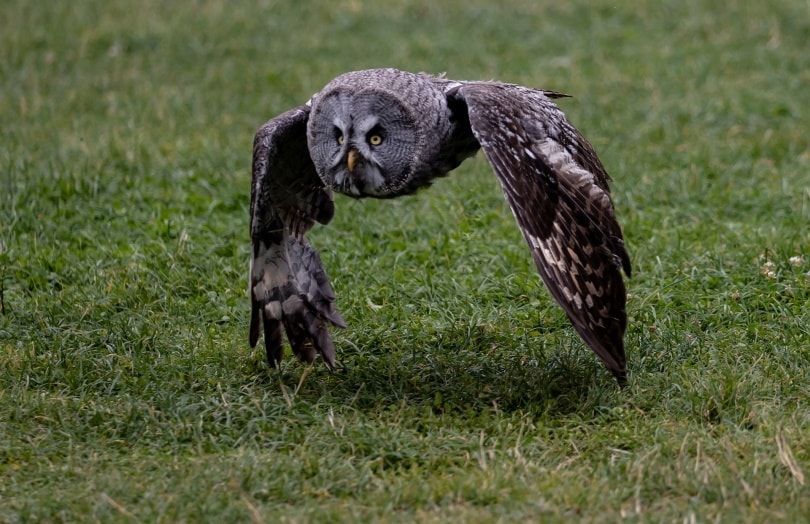
Owls can be extremely dangerous to smaller dogs and cats, especially if there are woods with a large clearing nearby that owls will use as a hunting ground. Owls fly silently, so they can sneak up on your pet, doing tremendous damage and possibly even carrying them off.
How To Avoid An Owl Attack
- If you hear the telltale hooting of an owl, keep your pets inside.
- If you hear hooting while you are doing yard activities or are out on a walk, there is a good chance the owl is trying to warn you that you are getting close to its nest. The owl will attempt to warn you before attacking in almost every case, so don’t ignore the sound.
- If you see an owl that seems to be acting aggressively, we recommend clapping your hands and shouting, which will send it flying off.
- If you have a camera with a flash or a smartphone with a flashlight, the light can disorient the owl, sending it away.
- Carry an umbrella or a long branch that has plenty of leaves. Owls tend to attack at the highest point, so they will attack the umbrella or branch instead of your head.
- Keep your property free of areas where rodents hide, like woodpiles, which can attract owls.
- Place large mirrors around your property, as it will get frightened by its reflection.
- Lighting can help keep away the nocturnal owls.
- Use bird spikes to prevent the owls from using posts and fencing as a perch to stalk your property.

Conclusion
Since most people can go an entire lifetime without ever seeing an owl, the danger they present is minimal. However, they can be quite dangerous if they have you in their crosshairs, and some attacks have even resulted in death. Knowing which type of owls live in your area and what type of habitat they enjoy so you can recognize potential nests around your property to help keep you and your pets safe.
Featured Image Credit: Kurit afshen, Shutterstock
About the Author Ed Malaker
Ed Malaker is a veteran writer who contributes to a wide range of blogs covering information on computer programming, pets, birding, tools, fitness, guitars, and optics. Outside of writing, Ed is often found working in the garden or performing DIY projects in the house. Ed is also a musician, spending his time composing music for independent films or helping people repair their guitars.
Related Articles:
How to Clean a Refractor Telescope: Step-by-Step Guide
How to Clean a Telescope Eyepiece: Step-by-Step Guide
How to Clean a Rifle Scope: 8 Expert Tips
Monocular vs Telescope: Differences Explained (With Pictures)
What Is a Monocular Used For? 8 Common Functions
How to Clean a Telescope Mirror: 8 Expert Tips
Brightfield vs Phase Contrast Microscopy: The Differences Explained
SkyCamHD Drone Review: Pros, Cons, FAQ, & Verdict
